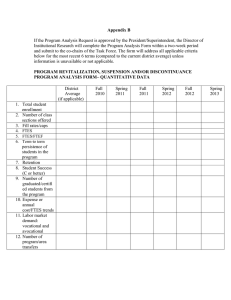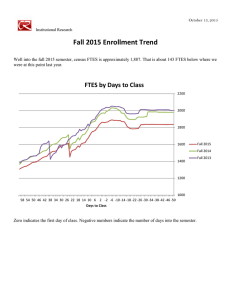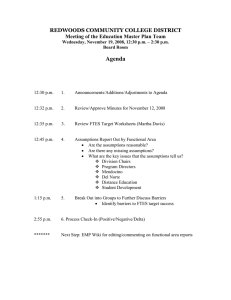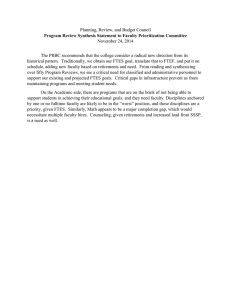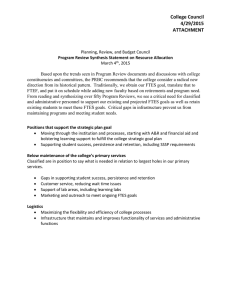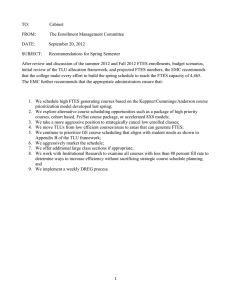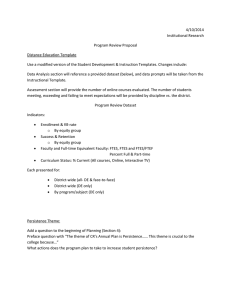Note terms are organized conceptually rather than alphabetically. Glossary
advertisement
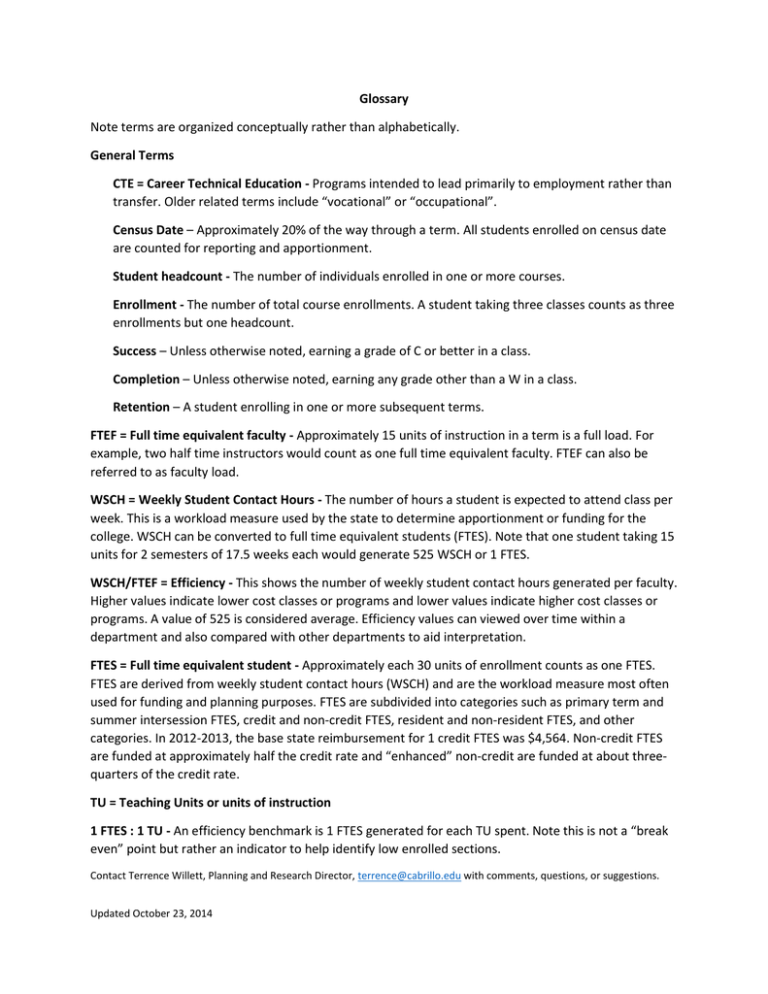
Glossary Note terms are organized conceptually rather than alphabetically. General Terms CTE = Career Technical Education - Programs intended to lead primarily to employment rather than transfer. Older related terms include “vocational” or “occupational”. Census Date – Approximately 20% of the way through a term. All students enrolled on census date are counted for reporting and apportionment. Student headcount - The number of individuals enrolled in one or more courses. Enrollment - The number of total course enrollments. A student taking three classes counts as three enrollments but one headcount. Success – Unless otherwise noted, earning a grade of C or better in a class. Completion – Unless otherwise noted, earning any grade other than a W in a class. Retention – A student enrolling in one or more subsequent terms. FTEF = Full time equivalent faculty - Approximately 15 units of instruction in a term is a full load. For example, two half time instructors would count as one full time equivalent faculty. FTEF can also be referred to as faculty load. WSCH = Weekly Student Contact Hours - The number of hours a student is expected to attend class per week. This is a workload measure used by the state to determine apportionment or funding for the college. WSCH can be converted to full time equivalent students (FTES). Note that one student taking 15 units for 2 semesters of 17.5 weeks each would generate 525 WSCH or 1 FTES. WSCH/FTEF = Efficiency - This shows the number of weekly student contact hours generated per faculty. Higher values indicate lower cost classes or programs and lower values indicate higher cost classes or programs. A value of 525 is considered average. Efficiency values can viewed over time within a department and also compared with other departments to aid interpretation. FTES = Full time equivalent student - Approximately each 30 units of enrollment counts as one FTES. FTES are derived from weekly student contact hours (WSCH) and are the workload measure most often used for funding and planning purposes. FTES are subdivided into categories such as primary term and summer intersession FTES, credit and non-credit FTES, resident and non-resident FTES, and other categories. In 2012-2013, the base state reimbursement for 1 credit FTES was $4,564. Non-credit FTES are funded at approximately half the credit rate and “enhanced” non-credit are funded at about threequarters of the credit rate. TU = Teaching Units or units of instruction 1 FTES : 1 TU - An efficiency benchmark is 1 FTES generated for each TU spent. Note this is not a “break even” point but rather an indicator to help identify low enrolled sections. Contact Terrence Willett, Planning and Research Director, terrence@cabrillo.edu with comments, questions, or suggestions. Updated October 23, 2014
